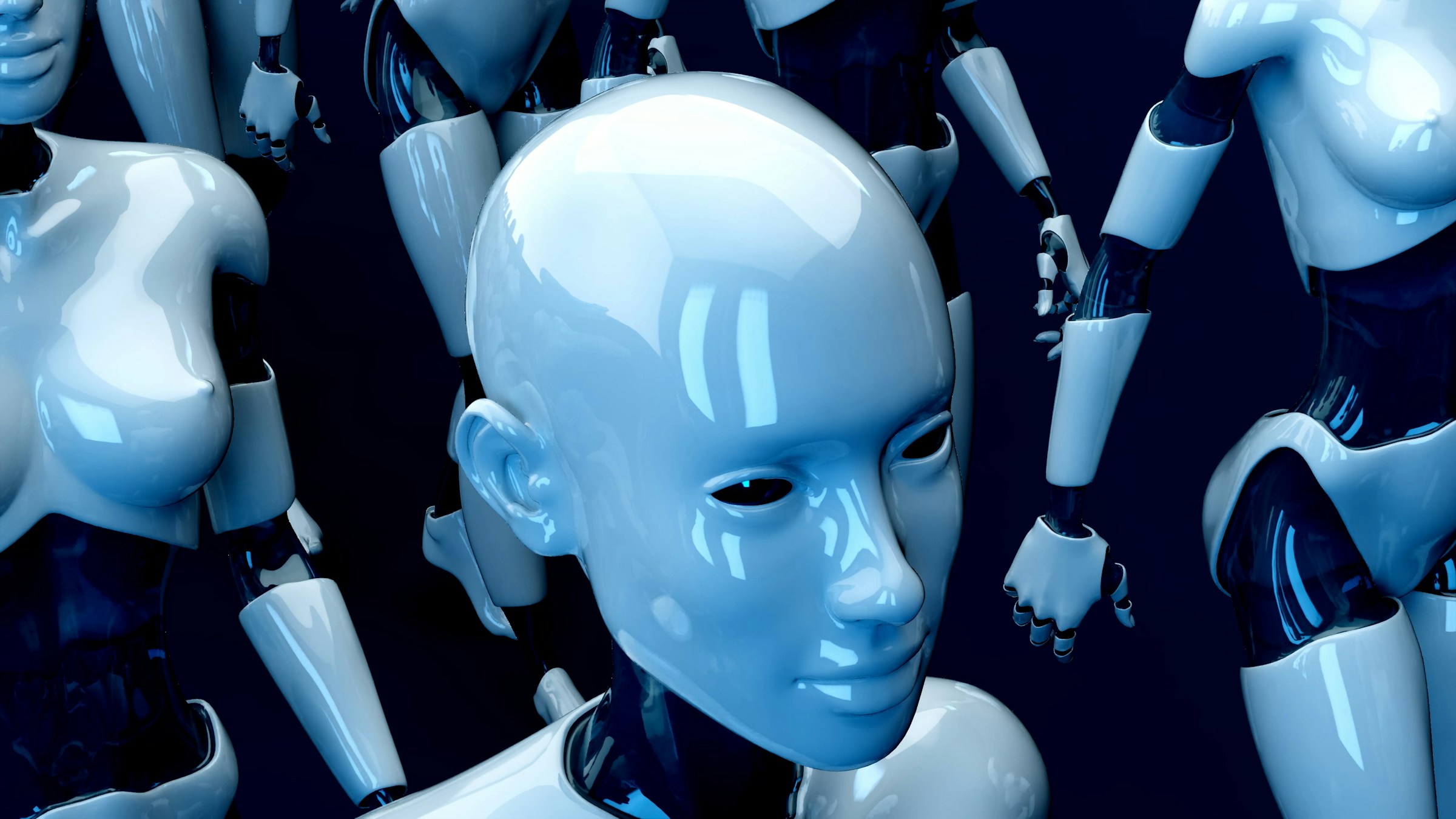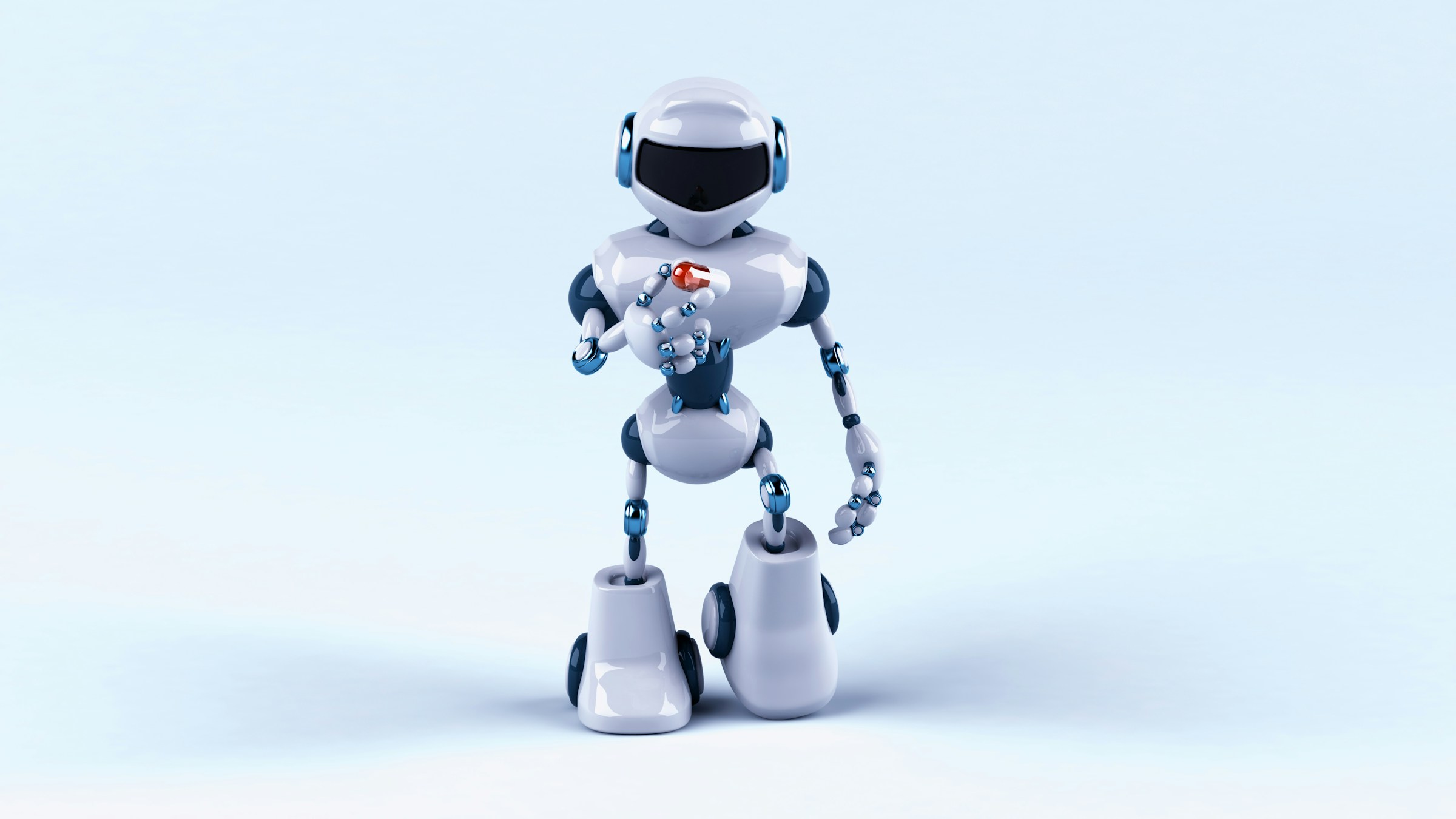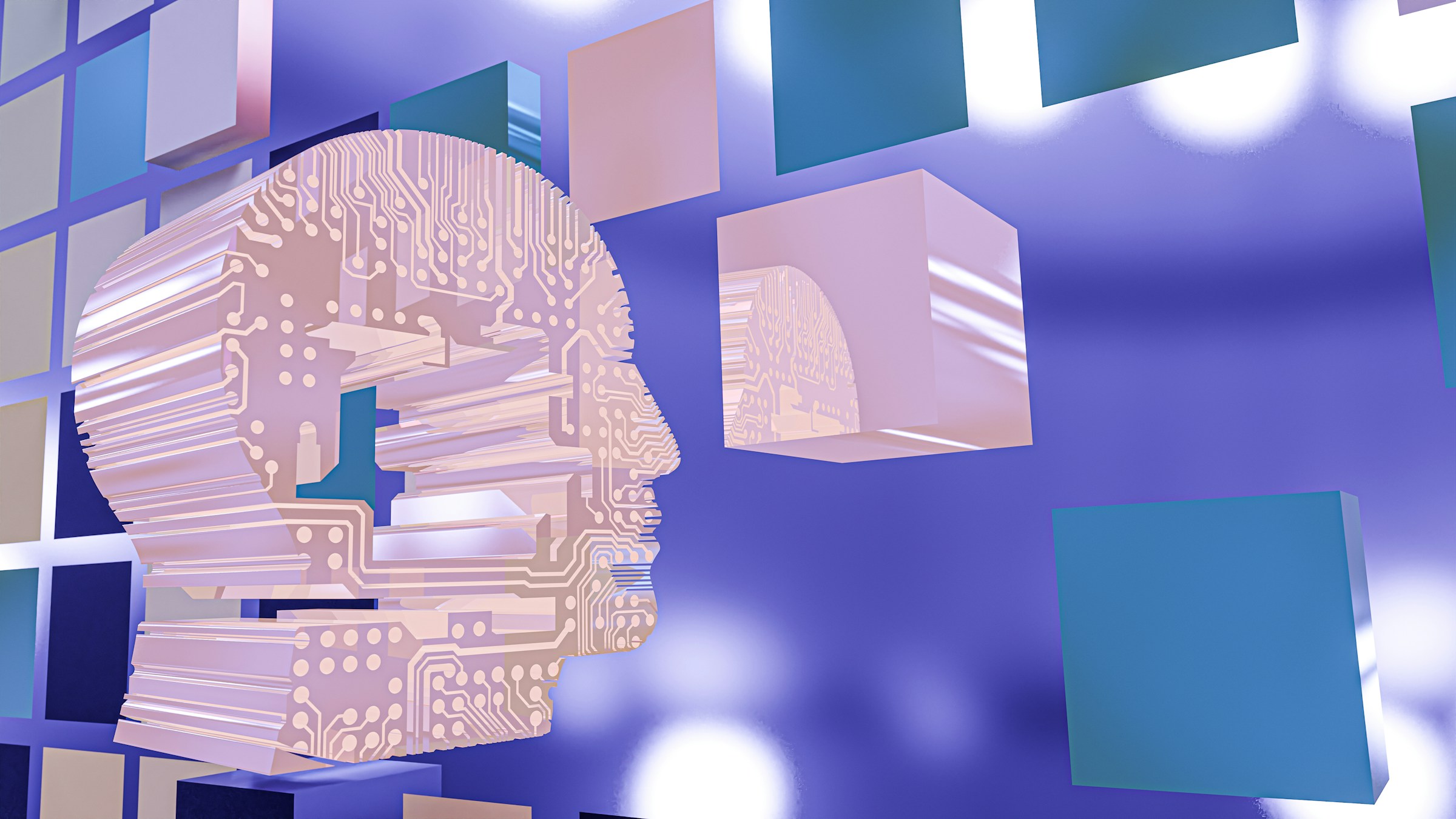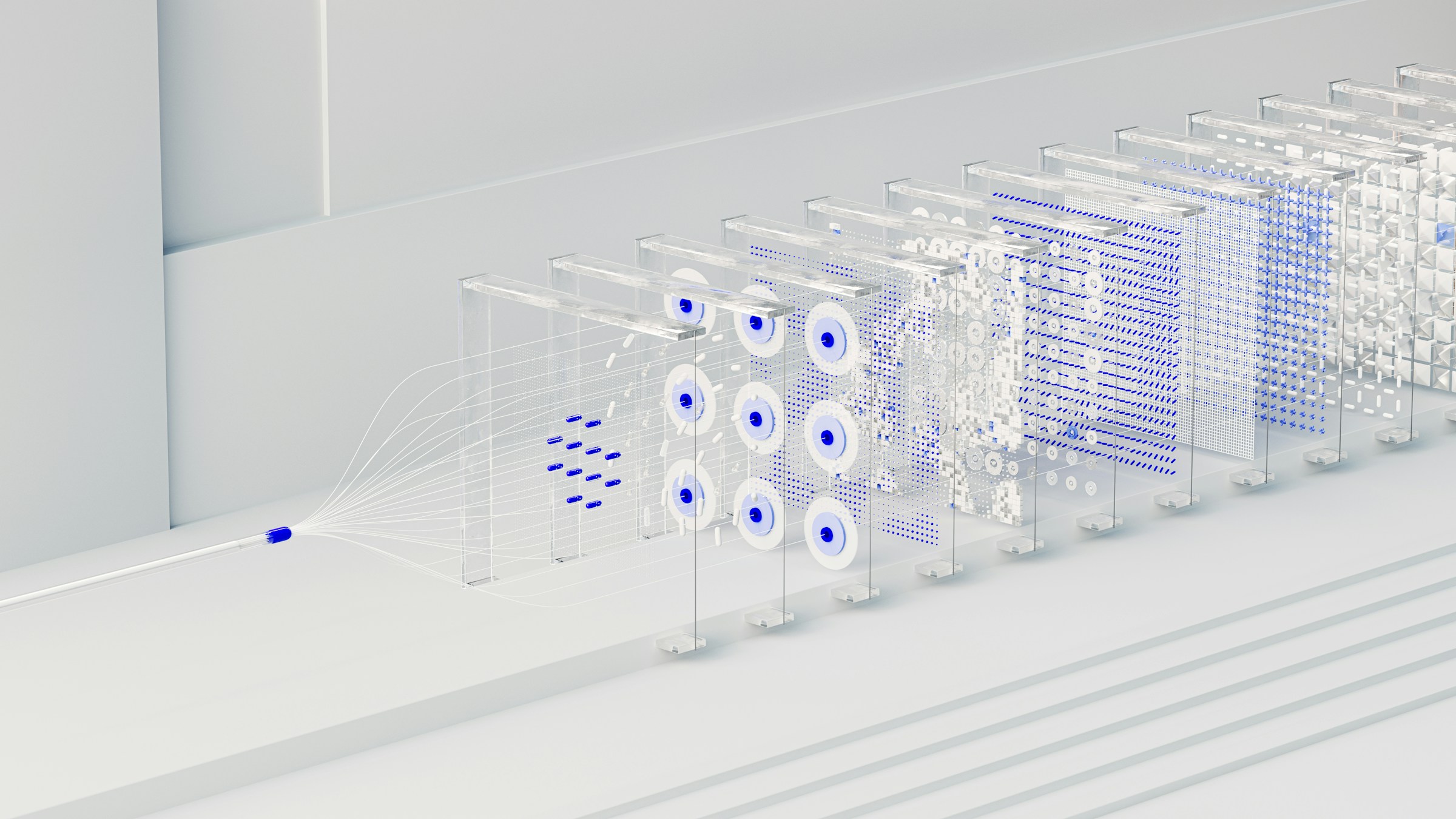Content
Have you ever wondered why AI agents make unexpected decisions, like telling a user that they are "too dumb to help" or denying a mortgage application to a user based on their race? These scenarios highlight the critical AI problems that can lead to harmful outcomes when AI agents are deployed before developers fully understand their decision-making processes. Understanding and addressing these AI problems is essential to building trustworthy AI systems. This guide will look closely at AI problems, their causes, and how to address them.
OpenSesame's AI agent infrastructure helps organizations build trustworthy AI systems by providing a robust framework for testing AI agents before deployment and the ability to create custom evaluation scenarios that simulate real-world conditions.
What is Artificial Intelligence?
Artificial intelligence is a branch of computer science that mimics human thinking and decision-making processes. These programs can often revise their algorithms by analyzing data sets and improving their performance without human help. They are usually programmed to complete tasks that are too complex for non-AI machines.
Is AI Harmful For Humans?

AI is a double-edged sword. On one hand, it can help with many tasks across industries to improve efficiency, safety, and productivity. On the other hand, AI poses risks that experts are still learning to navigate. The answer to whether AI is dangerous isn’t a simple yes or no. Instead, it’s more of a cautious “maybe.” Yes, there are risks associated with artificial intelligence, and many of these risks could have dire consequences if left unaddressed. However, with proper precautions, AI can be a powerful tool that improves everyone's life.
The Real-World Risks of AI
Some AI dangers aren’t merely hypothetical but tangible problems we face today. For instance, many AI systems suffer from unreliability and accuracy issues that can lead to dangerous consequences. In 2022, a young girl died after a self-driving car developed by Uber’s AI unit struck her while she was crossing the street. The vehicle detected her but misclassified her as a “false object,” leading to her failing to stop.
The tragedy raised severe concerns about the safety of autonomous vehicle technology and AI’s decision-making capabilities. Similar accuracy problems have been documented in less advanced AI systems like chatbots and virtual assistants. These technologies can produce incorrect or biased information, posing real-world risks across industries.
The Ethical Concerns of AI
Beyond the real-world dangers, AI also poses serious ethical risks that must be addressed. For instance, AI systems are often biased, leading to harmful consequences when deployed in the real world. AI learns from large datasets to generate responses and make decisions. If the information in these datasets is flawed or contains human biases, the AI will produce inaccurate and prejudiced results.
This mainly concerns sensitive subjects like hiring, law enforcement, and lending. AI can also violate privacy rights by collecting and using personal information without explicit consent. These problems raise serious ethical questions about the use of AI, especially as it becomes more advanced and integrated into society.
What Is OpenSesame and What Does It Have to Offer?
OpenSesame offers innovative AI agent infrastructure software that grounds AI models in reality. Our platform reduces hallucinations, enhances reliability, and saves hours of manual checking. Key features include real-time hallucination reports, business data integration, multimodal AI expansion, and open-source frameworks.
We provide ungrounded truth recognition, prompt template extraction, accuracy scoring, and a hallucination dashboard. OpenSesame allows businesses to confidently build trustworthy AI systems, offering real-time insights without latency for high-performing, reality-grounded AI solutions. Try our AI agent infrastructure management software for free today!
Related Reading
• Trustworthy AI
• Contextual AI
• AI Decision Making
17 AI Problems and Dangers To Look Out For

1. Ethics in AI: Addressing Moral Dilemmas
Ethics in AI is one of the most critical issues that needs to be addressed. Ethics in AI involves discussions about various issues, including privacy violations, perpetuation of bias, and social impact. Developing and deploying an AI raises questions about the ethical implications of its decisions and actions. For instance, the surveillance systems that AI has are a privacy concern.
Additionally, it is essential to take a more focused approach when implementing AI in sensitive areas such as health and criminal justice, which demand the increased application of ethical principles to reach fair outcomes. AI challenges relating to moral issues revolve around balancing technological development and working in a fair, transparent way that respects human rights.
2. Lack of Transparency: The Problem with AI Opaqueness
A pressing issue is a need for more transparency in AI systems, particularly in deep learning models that can be complex and difficult to interpret. This opaqueness obscures the decision-making processes and underlying logic of these technologies. When people can’t comprehend how an AI system arrives at its conclusions, it can lead to distrust and resistance to adopting these technologies.
3. Job Losses: The Impact of AI Automation
AI-powered job automation is a pressing concern as the technology is adopted in marketing, manufacturing, and healthcare industries. By 2030, tasks that account for up to 30 percent of hours currently being worked in the U.S. economy could be automated — with Black and Hispanic employees left especially vulnerable to the change — according to McKinsey. Goldman Sachs even states that 300 million full-time jobs could be lost to AI automation. “The reason we have a low unemployment rate, which doesn’t actually capture people that aren’t looking for work, is largely that lower-wage service sector jobs have been pretty robustly created by this economy,” futurist Martin Ford told Built In.
With AI on the rise, though, “I don’t think that’s going to continue.” As AI robots become more innovative and agile, the same tasks will require fewer humans. While AI is estimated to create 97 million new jobs by 2025, many employees won’t have the skills needed for these technical roles and could get left behind if companies don’t upskill their workforces. “If you’re flipping burgers at McDonald’s and more automation comes in, is one of these new jobs going to be a good match for you?” Ford said. “Or is it likely that the new job requires lots of education or training or maybe even intrinsic talents — really strong interpersonal skills or creativity — that you might not have? Because those are the things that, at least so far, computers are not very good at.”
As technology strategist Chris Messina has pointed out, fields like law and accounting are also primed for an AI takeover. Messina said some of them may well be decimated. AI is already having a significant impact on medicine. Messina noted that law and accounting are following, poised for “a massive shakeup.” “It’s a lot of attorneys reading through a lot of information — hundreds or thousands of pages of data and documents. It’s really easy to miss things,” Messina said. “So AI that has the ability to comb through and comprehensively deliver the best possible contract for the outcome you’re trying to achieve is probably going to replace a lot of corporate attorneys.”
4. Bias in AI: Discrimination Powered by Algorithms
Bias in artificial intelligence can be defined as machine learning algorithms' potential to duplicate and magnify pre-existing biases in the training dataset. To put it in simpler words, AI systems learn from data, and if the data provided is biased, then that would be inherited by the AI. The bias in AI could lead to unfair treatment and discrimination, which could be a concern in critical areas like law enforcement, hiring procedures, loan approvals, etc.
Learning to use AI in hiring and other methods to mitigate biases is essential. AI bias mitigation needs a deliberate approach to data selection, preprocessing techniques, and algorithm design to minimize bias and ensure fairness. Addressing bias AI challenges involves careful data selection and designing algorithms to ensure fairness and equity.
5. Social Manipulation: AI Algorithms Altering Behavior
Social manipulation also stands as a danger of artificial intelligence. This fear has become a reality as politicians rely on platforms to promote their viewpoints, with one example being Ferdinand Marcos, Jr., wielding a TikTok troll army to capture the votes of younger Filipinos during the Philippines’ 2022 election. TikTok is just one example of a social media platform that relies on AI algorithms. It fills a user’s feed with content related to previous media viewed on the platform. Criticism of the app targets this process and the algorithm’s failure to filter out harmful and inaccurate content, raising concerns over TikTok’s ability to protect its users from misleading information.
Online media and news have become even murkier in light of AI-generated images and videos, AI voice changers, and deepfakes infiltrating political and social spheres. These technologies make it easy to create realistic photos, videos, and audio clips or replace the image of one figure with another in an existing picture or video. As a result, bad actors have another avenue for sharing misinformation and war propaganda, creating a nightmare scenario where it can be nearly impossible to distinguish between credible and faulty news. “No one knows what’s real and what’s not,” Ford said. “You literally cannot believe your own eyes and ears; you can’t rely on what, historically, we’ve considered to be the best possible evidence ... That’s going to be a huge issue.”
6. Privacy Concerns: Data Collection Through AI
AI technologies often collect and analyze large amounts of personal data, raising privacy and security issues. To mitigate these risks, we must advocate for strict data protection regulations and safe data handling practices.
7. Security Risks: The Dangers of AI Misuse
As AI technologies become increasingly sophisticated, the security risks associated with their use and the potential for misuse also increase. Hackers and malicious actors can equip the potential of AI to develop more advanced cyberattacks, bypass security measures, and exploit vulnerabilities in systems.
The rise of AI-driven autonomous weaponry also raises concerns about the dangers of rogue states or non-state actors using this technology — especially when considering the potential loss of human control in critical decision-making processes. To mitigate these security risks, governments and organizations must develop best practices for secure AI development and deployment and foster international cooperation to establish global norms and regulations protecting against AI security threats.
8. AI Integration: The Challenges of Implementing AI
AI integration means integrating AI into existing processes and systems, which could be significantly challenging. This implies identifying relevant application scenarios, fine-tuning AI models to particular scenarios, and ensuring that AI is smoothly blended with the existing system. The integration process demands AI experts and domain specialists to work together to comprehensively understand AI technologies and systems, fine-tune their solutions, and satisfy organizational requirements.
Challenges include data interoperability or personnel training. Employee upskilling plays a significant role in AI integration. The Management change associated with these challenges requires strategic planning, stakeholder participation, and iterative implementations to optimize AI and minimize disruptions. This strategy will increase operational effectiveness in a changing company environment and stimulate innovation and competitive advantage.
9. Social Surveillance: The Dangers of AI Monitoring
In addition to its more existential threat, Ford is focused on how AI will adversely affect privacy and security. A prime example is China’s use of facial recognition technology in offices, schools, and other venues. Besides tracking a person’s movements, the Chinese government may be able to gather enough data to monitor a person’s activities, relationships, and political views. Another example is U.S. police departments embracing predictive policing algorithms to anticipate where crimes will occur.
The problem is that these algorithms are influenced by arrest rates, which disproportionately impact Black communities. Police departments then double down on these communities, leading to over-policing and questions over whether self-proclaimed democracies can resist turning AI into an authoritarian weapon. “Authoritarian regimes use or are going to use it,” Ford said. “The question is, ‘How much does it invade Western countries, democracies, and what constraints do we put on it?’”
10. Computing Ability: The Burden of AI Systems
Substantial computing ability is required in AI and intense learning. The need for high-performance computing devices, such as GPUs, TPUs, and others, increases with growing AI algorithm complexity. Higher costs and energy consumption are often required to develop high-performance hardware and train sophisticated AI models. Such demands could be a significant challenge for smaller organizations.
Innovations like neuromorphic and quantum computing could also offer potential solutions in the early development of hardware architecture. Moreover, distributed computation, as well as cloud services, can be used to overcome computational limitations. Managing computational requirements with a balance of efficiency and sustainability is vital for coping with AI challenges while dealing with resource limitations.
11. Dependence on AI: The Consequences of Over reliance
Over reliance on AI systems may lead to losing creativity, critical thinking skills, and human intuition. Striking a balance between AI-assisted decision-making and human input is vital to preserving our cognitive abilities.
12. Legal Issues with AI: The Balancing Act of Accountability and Innovation
Legal concerns around AI are still evolving. Issues like liability, intellectual property rights, and regulatory compliance are some of the significant AI challenges. The accountability question arises when an AI-based decision maker is involved, which results in a faulty system or an accident causing potential harm to someone. Legal issues related to copyright often emerge due to the ownership of the content created by AI and its algorithms.
Furthermore, strict monitoring and regulatory systems are necessary to minimize legal issues. A team of legal specialists, policymakers, and technology experts must work together to tackle this AI challenge and create clear rules and policies that balance innovation with accountability and protect stakeholders' rights.
13. Lack of Data Privacy Using AI Tools: Security Risks of AI Systems
A 2024 AvePoint survey found that the top concern among companies is data privacy and security. And businesses may have good reason to be hesitant, considering the large amounts of data concentrated in AI tools and the lack of regulation regarding this information. AI systems often collect personal data to customize user experiences or help train the AI models you use (especially if the AI tool is free).
Data may not even be considered secure from other users when given to an AI system, as one bug incident that occurred with ChatGPT in 2023 “allowed some users to see titles from another active user’s chat history.” While there are laws present to protect personal information in some cases in the United States, no explicit federal law protects citizens from data privacy harm caused by AI.
14. Socioeconomic Inequality: Biases in AI and Job Losses
If companies refuse to acknowledge the inherent biases baked into AI algorithms, they may compromise their DEI initiatives through AI-powered recruiting. The idea that AI can measure a candidate's traits through facial and voice analyses is still tainted by racial biases, reproducing the same discriminatory hiring practices businesses claim to be eliminating. Widening socioeconomic inequality sparked by AI-driven job loss is another cause for concern, revealing the class biases of how AI is applied.
Workers who perform more manual, repetitive tasks have experienced wage declines as high as 70 percent because of automation. Office and desk workers remain largely untouched in AI’s early stages. However, the increase in generative AI use is already affecting office jobs, creating a wide range of roles that may be more vulnerable to wage or job loss than others.
15. Autonomous Weapons: AI-Driven Warfare
As is too often, technological advancements have been equipped for warfare. When it comes to AI, some are keen to do something about it before it’s too late: In a 2016 open letter, over 30,000 individuals, including AI and robotics researchers, pushed back against the investment in AI-fueled autonomous weapons. “The key question for humanity today is whether to start a global AI arms race or to prevent it from starting,” they wrote. “If any major military prowes pushes ahead with AI weapon development, a global arms race is virtually inevitable, and the endpoint of this technological trajectory is obvious: autonomous weapons will become the Kalashnikovs of tomorrow.”
This prediction has come to fruition in the form of Lethal Autonomous Weapon Systems, which locate and destroy targets independently while abiding by few regulations. Because of the proliferation of potent and complex weapons, some of the world’s most powerful nations have given in to anxieties and contributed to a tech cold war. Many of these new weapons pose major risks to civilians on the ground, but the danger becomes amplified when autonomous weapons fall into the wrong hands. Hackers have mastered various cyber attacks, so it’s not hard to consider a malicious actor infiltrating autonomous weapons and instigating absolute armageddon.
If political rivalries and warmongering tendencies are not kept in check, artificial intelligence could be applied with the worst intentions. Some fear that, no matter how many influential figures point out the dangers of artificial intelligence, we will keep pushing the envelope with it if there’s money to be made. “The mentality is, ‘If we can do it, we should try it; let’s see what happens,” Messina said. “‘And if we can make money off it, we’ll do a whole bunch.’ But that’s not unique to technology. That’s been happening forever.’”
16. Limited Knowledge of AI: The Lack of Public Awareness
Limited knowledge among the general population is one of the critical issues impacting informed decision-making, adoption, and regulation. Misconceptions and misinterpretations of AI's abilities and constraints among users could result in irresponsible use and promotion of AI. Effective measures should be developed and implemented to educate people and make them more aware of AI processes and their uses.
Furthermore, enabling accessible resources and training opportunities would allow users to use AI technology more effectively. Bridging the knowledge gap through interdisciplinary collaboration, community involvement, and outreach is how society will gain the proper understanding of AI that can be productive while ensuring there are no ethical, societal, or legal issues.
17. Loss of Human Influence: The Impact of AI on Society
An overreliance on AI technology could result in the loss of human influence — and a lack of human functioning — in some parts of society. For instance, using AI in healthcare could reduce human empathy and reasoning. Applying generative AI to creative endeavors could diminish human creativity and emotional expression. Interacting with AI systems too much could cause reduced peer communication and social skills. So, while AI can be beneficial for automating daily tasks, some question if it might hold back overall human intelligence, abilities, and need for community.
Related Reading
• Challenges of AI
• How Can AI Help My Business
• Model Evaluation Metrics
• Unpredictable AI
• How to Reduce Bias in AI
How to Tackle Problems Related to AI

Equipping OpenSesame.dev to Build Better AI Models
OpenSesame.dev offers advanced AI agent infrastructure software that grounds AI models in reality. We reduce hallucinations, enhance reliability, and save hours of manual checking. Our platform provides real-time hallucination reports, business data integration, multimodal AI expansion, and open-source frameworks. We allow businesses to confidently build trustworthy AI systems, offering real-time insights without latency for high-performing, reality-grounded AI solutions. Try our AI agent infrastructure management software for free today!
Creating Sustainable AI Systems
AI systems need automated testing for data, infrastructure, model training, and monitoring to keep them in sync with real-world data. We call this closed-loop AI. The inability to automate may result in the initiative being unsustainable. A trustworthy AI platform relies on advanced MLOps and automation while incorporating techniques such as ML-assisted data curation, AutoML, and automatic model retraining to make this a sustainable initiative.
Improving Agility for AI Development
AI workloads demand iterative and collaborative work. With multiple teams contributing code to the same pipeline and the system changing with each check-in, the traditional sprint-based release cadences are challenging to manage. What if you could remove these headaches by automating these processes, allowing AI assets such as data, features, models, code, and pipelines to be shared and reused by different personas simultaneously? It also brings standardization to the development cycle with built-in quality checks across the AI lifecycle.
Boosting Explainability for AI
With the myriad of regulations companies must follow, the auditability and traceability of AI processes are imperative. Securing PII data without compromising the model’s accuracy is another essential. NessifAI provides end-to-end lineage and auditing across the lifecycle, from data ingestion to model serving, documenting the decision logic at all stages of the AI lifecycle.
Monetization: Making AI Pay for Itself
Monetizing data is a cornerstone of digital transformation, and AI calls for a new wave of monetizing insights. NessifAI creates a platform marketplace where all AI assets can be published and monetized for downstream consumption, allowing for an easy Google-like search for all assets and curation of assets.
Overcoming Algorithmic Bias in AI
Correcting algorithmic bias could be daunting; fortunately, there are multiple ways to prevent the hurdle from troubling you or overcome it completely: Use diverse training data sets that broadly represent different demographics and perspectives. Monitor and audit the algorithm’s results to detect potential bias and take corrective actions. Employ ethical frameworks and guidelines when designing and building AI models, focusing on fairness, transparency, and accountability.
Protecting Data Privacy and Security in AI
Data privacy and security may be critical issues if not handled carefully. Implement cybersecurity protocols and mechanisms (E.g., encryption, multi-factor authentication, etc.) to raise awareness and safeguard AI systems and data. Establish compliance and accountability frameworks to ensure data is handled responsibly and with ethical standards. Regularly audit and monitor AI systems for any potential security breaches or vulnerabilities.
Foster an organizational culture of data security and privacy, with proper training and protocols for handling sensitive data. Isolate your confidential data and ensure it is only accessible to the particular system or individuals. Use enterprise cloud solutions or private/Permissioned Blockchains. Leverage AI itself to protect your sensitive information, like anonymizing personal health records, and provide machine learning predictions without compromising privacy.
Start AI Projects with a Discovery Phase
We recommend starting your artificial intelligence project with a discovery phase and creating an AI proof of concept to avoid technology-related artificial intelligence challenges. This would allow you to map the solution requirements against your business needs, eliminate technology barriers, and plan the system architecture considering the anticipated number of users.
It is also essential to select a technology partner who knows how to overcome the data-related challenges of artificial intelligence — for instance, by reusing existing algorithms or deliberately expanding the size of a training dataset. Regarding the accuracy vs. explainability trade-off, the vendor of your choice should have hands-on experience working with LIME and surrogate models, representing sophisticated AI systems' decision-making processes.
12 Benefits of AI For Humans

1. The Perks of AI’s Superhuman Ability: 24/7 Availability
AI's round-the-clock availability is one of its most significant advantages. Other computer technologies can operate around the clock, too. Companies have benefited from the high availability of such systems, but only if humans have been available to work with them. According to multiple experts, AI's ability to make decisions and take actions without human involvement in many business circumstances means the technology can work independently, ensuring continuous operations at an unprecedented scale.
2. Why AI is the Ultimate Team Player: Scalability
AI not only works continuously but also scales almost infinitely. "With AI, you can scale to a level you never could have before," said Seth Earley, founder and CEO of Earley Information Systems and author of The AI-Powered Enterprise. The personalized recommendations companies like Amazon and Netflix offer their customers are a case in point.
While a sales clerk who works often enough with a customer could extend such services to that individual, AI can do so simultaneously for hundreds of thousands of customers by analyzing available customer data. AI similarly demonstrates this scalability in the financial industry, where institutions use the technology to instantly verify and validate millions of transactions and monitor for potential fraud daily.
3. The Consistency of AI: Improved Accuracy and Reduced Rate of Error
Unlike humans, AI systems don't get tired or become distracted. They can process infinitely more information and consistently follow the rules to analyze data and make decisions, making them far more likely to deliver accurate results nearly all the time. "Because AI does not rely on humans, with their biases and limitations, it leads to more accurate and more consistently accurate results," said Orla Day, CIO of educational technology company Skillsoft. There's a big caveat here, however. AI models must be built on good algorithms free from unintended bias, trained on enough high-quality data, and monitored to prevent drift to deliver such accuracy.
4. AI Isn’t Just for Humans: Enhanced Safety
AI is used for real-time monitoring and hazard detection. The technology can be trained to recognize normal machine operations and human behavior. It can detect and flag operations and behaviors outside desired parameters and indicate risk or danger. Such AI use has improved safety records in multiple industries and scenarios.
AI's ability to improve safety is evident in motor vehicle features that warn drivers when their attention wanes or they drift out of their travel lane. AI's safety-enhancing capabilities are also seen in manufacturing, where it is deployed to automatically stop machinery when it detects workers getting too close to restricted areas. It's also displayed when AI-powered robots handle dangerous tasks, such as defusing bombs or accessing unstable buildings, instead of humans.
5. The Mundane Tasks AI Can Handle: Performs Mundane and Repetitive Tasks
Experts also credit AI with handling repetitive tasks in humans' jobs and personal lives. As more computer systems incorporate AI into their operations, they can perform an increasing number of lower-level and often boring jobs that consume an individual's time. Everyday examples of AI handling mundane work include robotic vacuums in the home and data collection in the office.
That, in turn, leaves humans with more time for higher-value tasks. "This is where we see the biggest ROI right now, and it's where most companies are using AI: to reduce the amount of time people need to spend on such activities," said Claudio Calvino, senior managing director of the data and analytics practice at FTI Consulting.
6. How AI Improves Human Experiences: Improved Human Experiences
AI analyzes vast volumes of data to identify specific patterns, a capability that organizations use to deliver highly personalized services. For example, Daly said her company, Skillsoft, is using AI to produce more customized content to individual customers faster than human employees could.
Her company is hardly alone in using AI to create better experiences for customers and employees: The "Global AI & Digital Experience Survey 2024" from technology company Riverbed found that 94% of surveyed enterprise leaders said that AI will help them deliver a better digital experience for employees and end users.
7. AI’s Objective Approach: Unbiased Decision-Making
AI removes emotion, guesswork, intuition, and personal experience from decision-making and instead uses data and mathematical algorithms to identify the best course of action, explained Antino Kim, associate professor of operations and decision technologies at Indiana University's Kelley School of Business. AI can remove human biases from the process if the algorithms and data that AI systems use are themselves free from bias. However, even then, AI might need to be more foolproof, as it can produce inaccurate results and made-up responses, known as hallucinations.
8. Why You Don’t Need To Worry About AI’s Judgement: Lack of Emotion and Judgment
Similarly, AI has no human emotions or judgment, making it a valuable tool in various circumstances. For example, AI-enabled customer service chatbots won't get flustered, pass judgment, or become argumentative when dealing with angry or confused customers. Kim said that can help users resolve problems or get what they need more quickly with AI than with humans.
He said research has found, for example, that students sometimes are more comfortable asking chatbots questions about lessons rather than humans. "The students are worried that they might be judged or be [thought of as] stupid by asking certain questions. But with AI, there is absolutely no judgment, so people are often actually more comfortable interacting with it."
9. AI: The Innovation Engine
AI is fueling advances across multiple industries and functional areas, such as supply chain operations. Moreover, it is expected to spur even more innovations in the future. "AI is bringing massive improvements; it is a game-changer," Johnson said. For example, he pointed to AI's use in drug discovery and healthcare, where the technology has driven more personalized treatments that are much more effective.
10. AI and Productivity: Improved Efficiency and Productivity
According to Zhe "Jay" Shan, assistant professor of information systems and analytics at Miami University Farmer School of Business, individuals and organizations find that AI significantly boosts efficiency and productivity. He highlighted how generative AI (GenAI) tools like ChatGPT and AI-based software assistants like Microsoft's Copilot can shave significant time off everyday tasks. Look at how AI is changing software development, for example.
Coders can use GenAI to handle much of the work and then use their skills to fine-tune and refine the finished product -- a partnership that saves time and allows coders to focus on where they add the most value. "I don't think it's about man versus machine. It's more about using AI technologies to augment and improve performance. That's where the potential is," said Arnab Bose, chief scientific officer at UST AlphaAI, a digital transformation software and services company.
11. The Democratization of Knowledge: Democratization of Knowledge
Johnson said that as AI becomes more accessible, it also facilitates access to more knowledge for more people and helps more people make sense of information that was once only the domain of experts. Look at software development again.
AI tools enable more people to learn how to code, but they also allow individuals to produce software code without knowing how to code. Johnson said organizations benefit here, too, as they can use AI to collect, catalog, archive, and then retrieve institutional knowledge held by individual workers, ensuring it is accessible to others.
12. AI Brings Expertise to Everyone: Expanded Access to Expertise
AI-powered computer systems are being built to perform increasingly expert and specialized services, making such services accessible to people and businesses that could not easily access them in the past. Take, for instance, AI's ability to bring big-business solutions to small enterprises, Johnson said.
AI gives smaller firms access to more and less costly marketing, content creation, accounting, legal, and other functional expertise than they had when only humans could perform those roles. This, he noted, gives solo practitioners and small shops the ability "to execute high-caliber business operations."
Try Our AI Agent Infrastructure Management Software for Free Today
OpenSesame offers innovative AI agent infrastructure software that grounds AI models in reality. Our platform reduces hallucinations, enhances reliability, and saves hours of manual checking. Key features include real-time hallucination reports, business data integration, multimodal AI expansion, and open-source frameworks.
We provide ungrounded truth recognition, prompt template extraction, accuracy scoring, and a hallucination dashboard. OpenSesame allows businesses to confidently build trustworthy AI systems, offering real-time insights without latency for high-performing, reality-grounded AI solutions. Try our AI agent infrastructure management software for free today!
Related Reading
• How to Improve Machine Learning Model
• AI Decision Making Examples
• How to Build an AI agent
• AI Agent Examples
• AI Agent Frameworks





